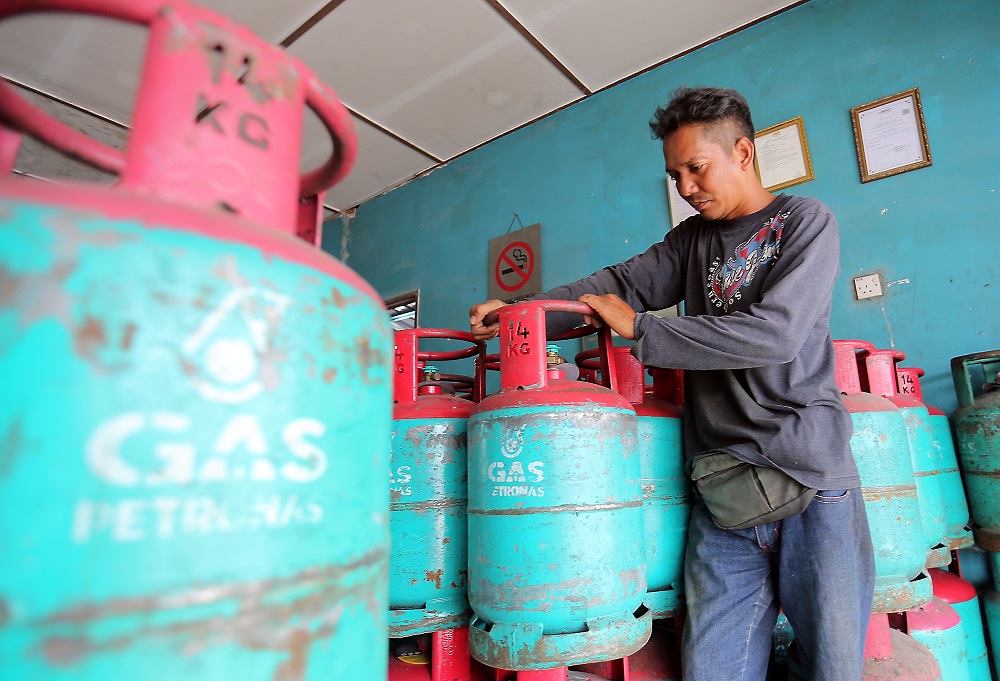KUALA LUMPUR, Oct 14 — The National Audit Department has revealed some RM1.71 billion in leakages have occurred from the management of the liquefied petroleum gas (LPG) subsidy by three ministries and agencies since the end of 2017.
In the Auditor-General’s (A-G) Report 2018 Series 1 on the activities of federal ministries, agencies, and statutory bodies, it stated the leakages were due to the use of government-subsidised LPG cylinders by consumers who are not from the target social categories.
The subsidy has been in place since 1983, as an initiative to reduce the rakyat’s living costs burden. Used as cooking gas, the cylinders come in 10, 12 and 14 kilogrammes, primarily for household and domestic consumers.
“In 2017 the Treasury of Malaysia spent up to RM3.338 billion on petroleum products subsidy, consisting of fuel, diesel, and LPG, with LPG being the highest subsidised product by the government from 2015 to 2017.
“The Automatic Price Mechanism (APM) system ensures LPG’s price remains stable and controlled when it reaches consumers. At present, the retail price is RM1.90 a kilogram nationwide,” read the report, which added the government bears the cost differences between LPG’s retail and actual prices via subsidies.
The subsidy’s management involves the Treasury under the Finance Ministry, the Domestic Trade and Consumer Affairs Ministry, and the Customs Department’s Tax Division. The findings of the report include weaknesses in managing the subsidy’s payment, as well as in the areas of enforcement and monitoring.
“Payments of the LPG subsidy by the Treasury were made without waiting for Customs to check the veracity of the claims. The Treasury also has no specific standard operation procedure (SOP) when it comes to payment of subsidy claims by the supplier companies.
“As a result, between 2015 to 2017 an excess of RM45.5 million was paid to the companies than the accurate amount. Additionally, Customs’ lengthy verification process for the subsidy claims take up to 14 to 649 days,” said the report.
Weaknesses in enforcement and monitoring include the Treasury appointing LPG suppliers without any agreements or specified processes, as well as existing suppliers, distributors, and retailers whose Domestic Trade Ministry-issued PDA Permission and Scheduled Controlled Goods license has expired.
“No specific SOP and system was developed to facilitate the subsidy’s management. Coupled with constraints in enforcement personnel numbers, the enforcement and monitoring of suppliers, primary and sub-distributors to ensure adherence to the related laws and regulations is difficult to carry out.
“On the part of the LPG wholesale and retail companies, there is a failure to maintain complete and orderly stock records. It was also discovered that certain wholesalers and retailers have been unable to prove their premises were ever inspected by Domestic Trade Ministry enforcement officers,” said the report.
Four recommendations were made by the A-G to address the LPG subsidy management’s issues, starting with the Finance Ministry and its Domestic Trade counterpart.
“Both ministries need to set clear policies on the definition of target social categories, and the type of control desired to ensure said policies are in line with the powers provided for in law.
“The Treasury must conduct an outcome evaluation on the effectiveness of the LPG subsidy grant programme, to ensure its benefits will only be enjoyed by the target social categories and to avoid future leakages,” read the report.
The report also recommended the Treasury prepare comprehensive SOPs, encompassing suppliers’ appointment process, their subsidy claims, and monitoring LPG supply chains in tandem with the Domestic Trade Ministry and Customs Department.
“The Domestic Trade Ministry must also increase enforcement and monitoring activities of LPG-related companies, especially with regards to records’ maintenance, regular physical inspections, and adherence to licensing terms.



















